|
'Sepak Raga' was the name of an ancient game played in the Malay states and in the neighboring countries of Singapore and Brunei. 'Sepak' is Malay for "kick" and 'Raga' is the "rattan ball" used in the game, which involved players standing in a circle keeping the 'Raga' in the air for as long as possible without using their hands. Variations of this were played in other Southeast Asian countries too; in Thailand it was called "Takraw", in the Philippines, "Sepa Sepa", in Myanmar, "Ching Loong", in Indonesia, "Rago" and in Laos, "Kator".
Modern Sepak Takraw, or Takraw for short (also known as Kick Volleyball), began in Malaysia and is now their national sport. It combines elements of Soccer, Footbag, Volleyball, Baseball, Badminton, Gymnastics and the ancient sport of Sepak Raga. Basically, three players on either side of a 5-foot high net, in a court that is the same dimensions as douibles badminton, have three chances to pass, set and spike the ball back to the opposing side who tries to block the spiked ball, all very much like Volleyball, EXCEPT WITHOUT THE USE OF HANDS OR ARMS! In today's game, the orgininal balls hand-woven of rattan stems have been replaced by hand-woven synthetic balls, which are much safer and certainly much more durable.
Although there is another traditional game called Hoop Sepak Takraw that originated in Thailand that continues to be a competitive event in major Asian Sports Meets, it is the Net Games that have developed (players competing against eachother in a court over a net) that are the ones that are growing more rapidly in popularity among both players and spectators world-wide, those games are Regu Sepak Takraw (playing 3-on-3), Doubles Sepak Takraw (playing 2-on-2), and Beach Sepak Takraw (playing 4-on4). The Sepak Takraw court and net height for all three games are of the same dimensions and height as in badminton. But out of the three net games, the original one, Regu Sepak Takraw is the most widely played and most popular. "Regu" is a Malaysian word that is used to refer to the three players on each side of the court (comparible to "team" in English). Two regus compete for match-winning scores by serving and spiking a "takraw" into the opponent's court. Most of the same rules apply as for volley ball, with the following main exceptions:
- players are prohibited from using their hands & arms (except for when the tosser throws the ball to server)
- a player can touch the ball up to 3 times consecutively (but ball has to return to opponents side by 3rd hit)
- the players' positions on the court need not be rotated prior to serving throughout the match
- served balls hitting the net (and falling within the opponent's boundary) are accepted
Traditionally a match was composed of 3 sets, with the first two sets going to 21 and a third tie-break set (if needed) going to 15, however, recent rule changes has seen a move to less points per set, but playing more sets per match. Now in most international competitions, a match is decided by the first regu to win the best our of FIVE 15-point sets (rather than three). In each set, if both regus are tied at 14-14, play continues until one regu wins by 2 points, up to a ceiling of 17 points.
Another significant rule change has been a move to having each regu serve 3 consecutive serves, regardless of whether or not they received the points for the ensuing rallies of those serves ... so in this way, serving has now become more like it is in table tennis, which helps even out the play, especially when there is a very strong, serve-dominating regu.
Many who see Sepak Takraw being played, or try it themselves, for the first time often make comments like, “This is the most amazing sport!”, “Did you see that?!”, “Takraw rocks, I’m in!”, “This is great for improving soccer skills!”, etc.
THE MYTH is that only super flexible, agile, athletes can play this game … totally NOT true! Anyone of any age or ability level can play Sepak Takraw, simply MODIFY it for beginners and increase the challenge as their eye-foot skills improve.
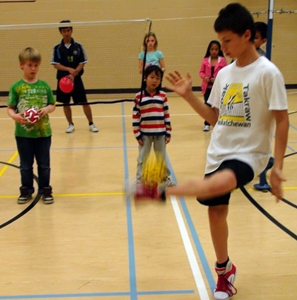 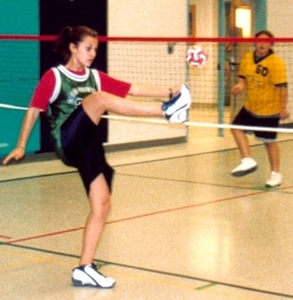  Students from grade 4/5 and up learn and play Sepak Takraw in schools across North America Students from grade 4/5 and up learn and play Sepak Takraw in schools across North America
FOR MORE INFORMATION ON SEPAK TAKRAW, SEE THE FOLLOWING WEBSITES:
International Sepak Takraw Federation (ISTAF) - the International Governing Body for Sepak Takraw
Sepak Takraw Association of Canada (STAC) - the National Governing Body for Sepak Takraw in Canada
Sepak Takraw Saskatchewan (STAS) - the Provincial Governing Body for Sepak Takraw in Saskatchewan
Gajah Emas Industries - the Malaysian Manufacturer of Takraw balls & other Sepak Takraw equipment
|
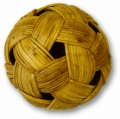 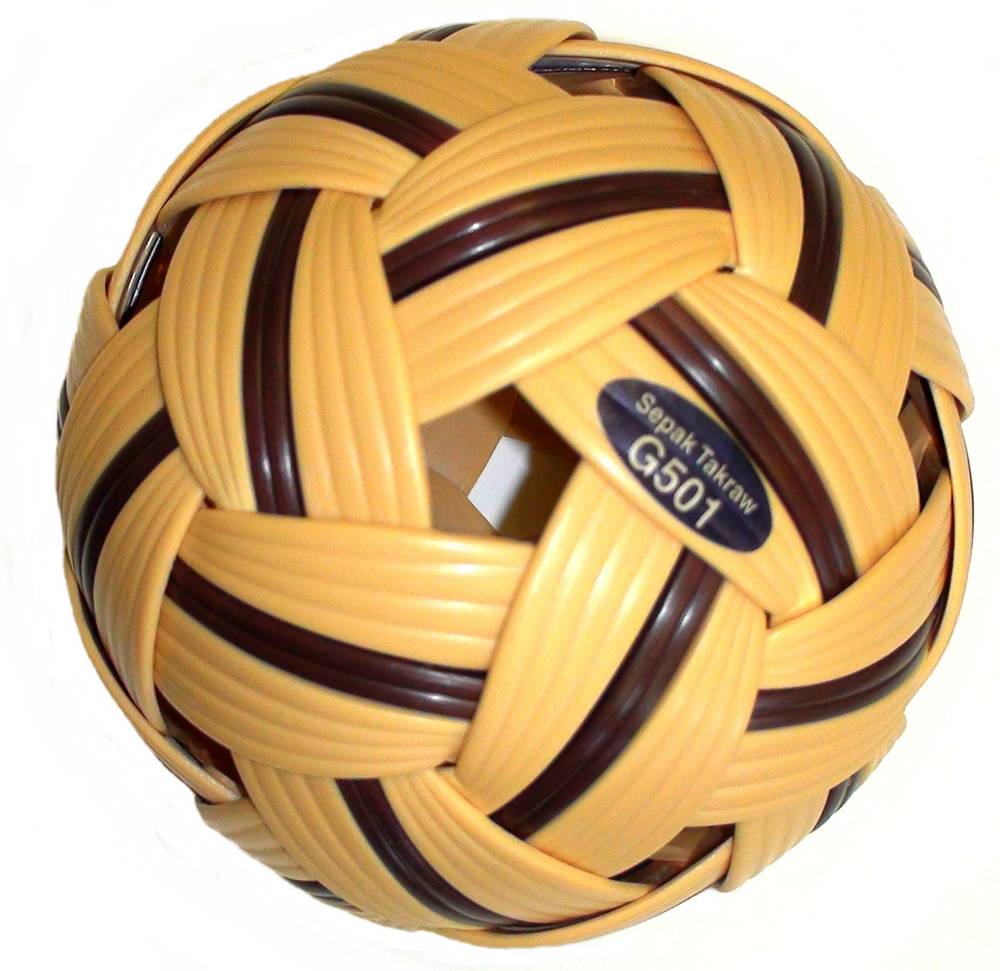 Original Rattan Ball Modern Synthetic Ball Original Rattan Ball Modern Synthetic Ball
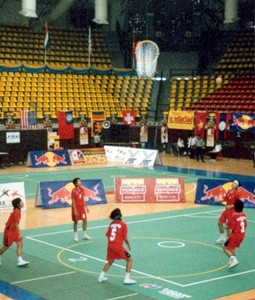 Hoop Sepak Takraw, a traditional Thai game, Bangkok, Thailand, 2004 Hoop Sepak Takraw, a traditional Thai game, Bangkok, Thailand, 2004
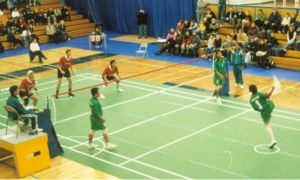
Regu Sepak Takraw: Thailand vs. Canada, Nanaimo, BC, March 2002
 July 21, 2012 Canadian Open: Advanced Sepak Takraw with big spikes & blocks, Sask A vs. Sask B July 21, 2012 Canadian Open: Advanced Sepak Takraw with big spikes & blocks, Sask A vs. Sask B
|








